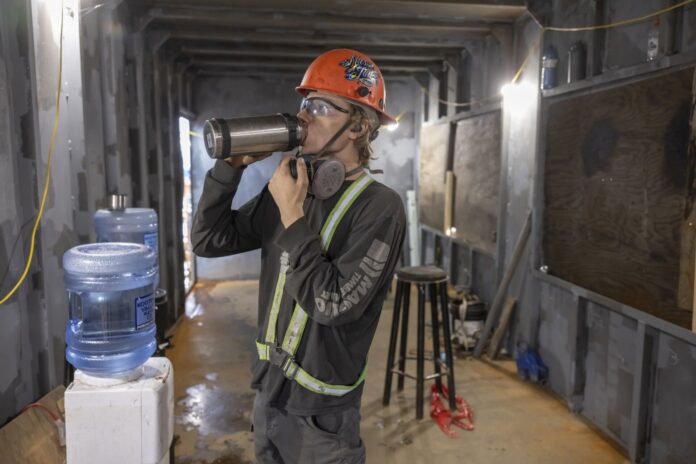WorkSafeBC is reminding employers and workers of the serious risks associated with heat stress on the job.
According to the agency, if not recognized and treated early, it can lead to heat exhaustion and heat stroke.

Between 2020 and 2024, WorkSafeBC accepted 315 heat-related injury claims, with the highest numbers in transportation, public works, construction, food services, and film and television production.
Something going on in the Cariboo you think people should know about?
Send us a news tip by emailing [email protected].
“During the hot summer months, the risk of heat stress increases in indoor workplaces without air conditioning and at most outdoor worksites,” said Todd McDonald, Head of Prevention Services at WorkSafeBC.
“Heat stress can lead to serious health problems, but it’s a preventable injury.”
On Monday, Environment Canada issued a heat warning for much of the province including the north.
Depending on the level of risk, this may include a heat stress mitigation plan that provides education and training on how to recognize symptoms and respond appropriately.
“Heat stress isn’t caused by temperature alone,” added McDonald. “Environmental conditions such as humidity and radiant heat, the physical demands of the work, and individual risk factors — like underlying health conditions — all contribute. That’s why risk assessments and controls need to be tailored to specific worksite conditions.”
What employers can do:
- Ensure that workers are engaged in discussions about heat-related hazards at the start of each workday.
- Establish cooling areas with shade and water.
- Determine appropriate work-rest cycles; when a worker feels ill, it may be too late.
- Rotate work activities or use additional workers to reduce exposure.
- Provide air conditioning or increased ventilation to remove hot air.
- Monitor heat conditions and require workers not to work alone.
- Ensure there is adequate first-aid coverage and that emergency procedures are in place.
What workers can do:
- Drink plenty of water (one glass every 20 minutes).
- Wear light-coloured, loose-fitting clothing made of breathable fabric, such as cotton.
- Wear sunscreen and reapply it liberally throughout the day.
- Take rest breaks in a cool, well-ventilated area.
- Do more strenuous physical work activities during the coolest parts of the day, before 11 a.m. and after 3 p.m.
- Know your personal risk factors, such as medications and any pre-existing conditions.
- Check the signs and symptoms for heat stress for yourself and co-workers; speak to your supervisor about the risk of heat and understand the emergency procedures if you do not feel well, especially if you are working alone.










